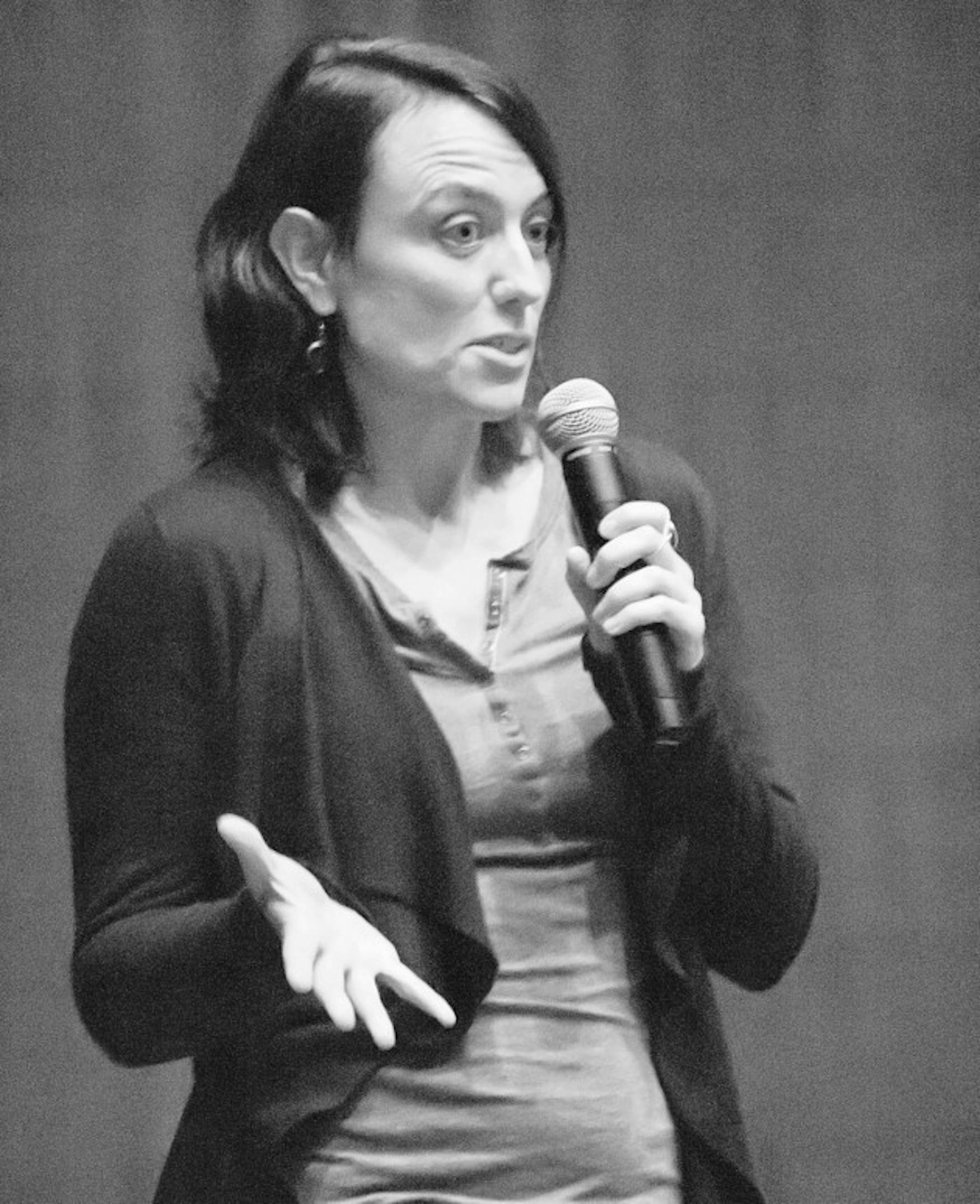Simone Weil' highlights activist's life
"Attention is the rarest and purest form of generosity." — Simone Weil.
Filmmaker Julia Haslett was so profoundly touched by this quote that she decided to embark on a six-year journey in the hopes of understanding the inner workings of Weil, a 20th-century French philosopher.
Last Thursday, a sizeable crowd of students, faculty and other members of the Brandeis community gathered at the Wasserman Cinamatheque for the screening of An Encounter with Simone Weil, a film that tells the story of Haslett's journey. The event was hosted by the Mandel Center for the Humanities and the Philosophy, History of Ideas and Romance Studies departments. Haslett herself came to the event and facilitated a discussion after the screening.
"I came across this quote of [Weil's], and it just struck me very deeply. … I discovered that there was this totally radical, young woman who spoke about truth to power," Haslett explained in an interview with justArts.
"I thought people should know about her. She is someone I will always be learning from; she is a lifetime project," said Haslett.
Weil, born on Feb. 3, 1909, was raised by a wealthy family of intellectuals. Always acutely aware of the suffering around her, Weil refused to eat sugar when she was five because the French soldiers at the front of World War I didn't have any. Weil was fervently engaged in social and political matters throughout the rest of her life, writing philosophical essays and advocating on behalf of the poor and the disenfranchised. She even fought in the Spanish Civil War and quit her job teaching philosophy so that she could take a job in a factory and observe the dehumanizing effects of the machine. Weil responded to her experience in the factory by becoming involved in the workers' movement and protesting against unfair labor practices. During the German occupation of Paris, Weil escaped with her parents to the United States in 1942, but refused to eat more than the official ration in occupied France. Even when Weil was diagnosed with tuberculosis she refused to eat and receive medical treatment. This decision resulted in her early death at the age of 34. It is debated whether Weil's death should be considered a suicide.
In An Encounter with Simone Weil, Haslett starts off by posing the following question: "What kind of a response does seeing human suffering demand of us, whether the person is someone we know or a total stranger?"
Haslett's film explores this question, though a concrete answer is never really provided. In fact, the film evolves into more of a personal narrative. The focus shifts away from Weil and onto Haslett's own family. Haslett's father committed suicide, and her brother, Timothy, who earned his B.A. in African American studies at Brandeis in 1992, died unexpectedly from a prescribed medication overdose while Haslett was editing the film. Haslett explains, "I did not go into the film knowing how it would turn out, and I think most documenters do not know going in; they need to be open."
Haslett's voice came through in the movie, creating a powerful dialogue between her own convictions and Weil's. Haslett has a hard time grappling with Weil's potential suicide, explaining that what Weil lacked was a sense of compassion for herself. At the end of the film, Haslett mulled over the question: Does it take just as much courage to leave the world as it does to stay in it? "Sometimes the most difficult thing is to be present," says Haslett.
I appreciate the fact that Haslett studied Weil subjectively. Though her documentary did not provide the most scientific analysis of Weil's life—she left out certain aspects like her subject's sense of humor and sarcasm—what the film did deliver was a powerful story. Haslett did not present objective facts, but rather her own emotional discoveries. Haslett's interpretation made Weil's ideas come to life, especially when she drew parallels between Weil's anti-war, anti-institution sentiments and the wars in Iraq and Afghanistan and the corruption within the Bush administration.
While researching Weil before the film, I read various biographies that described her as a Marxist and a feminist, but I wondered how accurate these labels actually are. Haslett explained that Weil was not a feminist and that she often challenged Karl Marx. She changed Marx's famous saying, "Religion is the opium of the people" to "It is not religion but revolution that is the opium of the people." Haslett explained, "[Weil's] legacy was made by a lot of scholars. What she represents has been shaped by others. It makes sense that she has been labeled, as most of her life has been written for her." Haslett did not try to understand Weil by reading what other people wrote about her, or by classifying her into different labels. Rather, the director tried to walk in Weil's shoes by interviewing people that had known her and hiring an actress whose job was to "become Weil" so that Haslett could get a better idea of what she was like in real life. Haslett's film may be as close as we can ever get to learning about Weil, because it takes on a more intimate, experimental approach. More importantly, perhaps learning about Weil is not the real aim of the film. Maybe its true purpose is to use Simone Weil's philosophy as the springboard for better understanding the problems of today and for coming to terms with our own internal struggles.



Please note All comments are eligible for publication in The Justice.